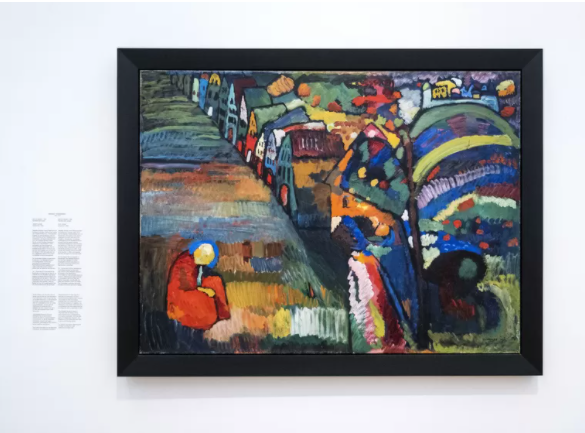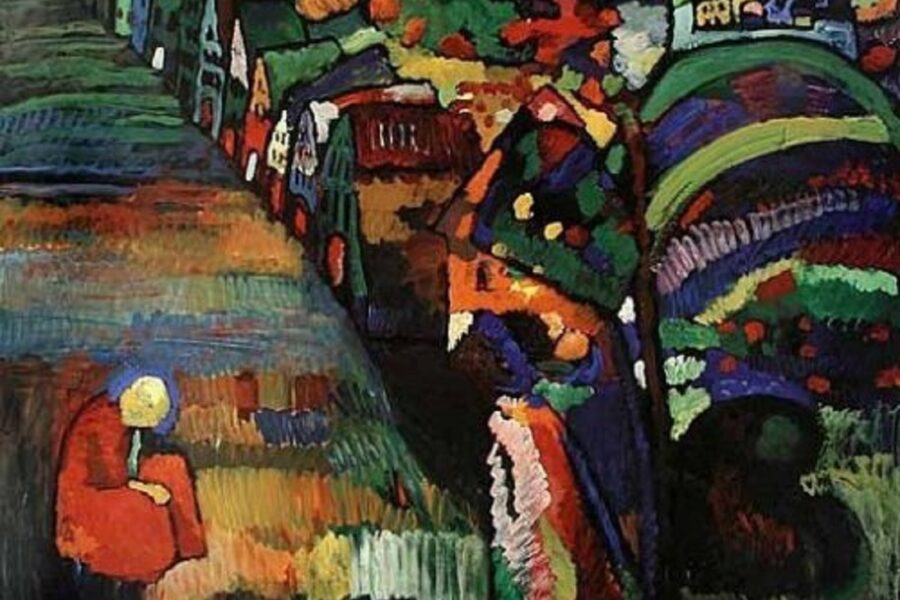[THIS IS AN ENGLISH TRANSLATION OF THE ORIGINAL DUTCH ARTICLE “Amsterdam hoeft schilderij van Kandinsky niet terug te geven” PUBLISHED ON THE TROUW ON DECEMBER 16, 2020] (https://www.trouw.nl/cultuur-media/amsterdam-hoeft-schilderij-van-kandinsky-niet-terug-te-geven~bc719999/)
Looted or not? In any case, the Stedelijk Museum in Amsterdam does not have to return a painting by Wassily Kandinsky to the Lewenstein family.
Harmen van Dijk December 16, 2020 , 13:27

The painting Bild mit Häusern by Wassily Kandinsky. EPA image
The Lewenstein Jewish family never wanted to sell Wassily Kandinsky’s colorful work, ‘Bild mit Häusern’, during World War II. It happened under duress, the heirs say. They have been trying to get it back for ten years. For the time being it will hang where it hangs, in the Stedelijk Museum in Amsterdam. The judge ruled on Wednesday that the advice of the restitutions committee, which saw no reason to return the artwork in 2018, remains intact. The Lewenstein family is ‘extremely disappointed’ and is appealing, says lawyer Axel Hagedorn.
In 2012, the heirs made an appointment with the municipality of Amsterdam, the formal owner of the painting. They would adhere to the advice of the restitution committee of the Ministry of Education, Culture and Science, which judges on looted art from the war. But once that binding opinion was in place, the heirs disagreed with the motivation and questioned the independence of the judgment. They still went to court.
Before the war, the 1909 painting was part of the extensive art collection of Robert Lewenstein, who had made a fortune in the sewing machine trade. In October 1940 it was sold at auction, along with about a hundred other objects belonging to the family. The municipality of Amsterdam bought it for 160 guilders. “And that while in 1923 it was purchased for 500 guilders. Far below the price, ”says Hagedorn. A wartime sale of property belonging to a Jewish family is suspicious, he says. “It has never been shown that the family itself put the work up for auction and it is not clear where the proceeds went.” So looted art.
It has not been shown that the heirs have an emotional connection with the work
According to the restitution committee, it is not possible to determine why the family sold the painting, as there were already financial problems before the German invasion. Moreover, it has not been shown that the heirs have an emotional bond with the work, while it is essential for the collection of the Stedelijk Museum. A statement that also caused quite a stir internationally.
The last argument is spicy. Last week a report was published by the Kohnstamm commission, which investigated how the Netherlands dealt with Nazi looted art. An important recommendation was that the importance of a museum should never play a role if a work of art has been stolen. Then it must be returned. “That added to our arguments,” says lawyer Hagedorn. “It is a political choice whether this advice is applied retroactively to this case.”
Hagedorn is convinced that the restitution committee was biased and that the interests of the Stedelijk Museum have been given priority. Four of the seven members of the committee have business ties to the museum, Hagedorn said. The judge ruled that this should have been objected earlier, which Hagedorn in turn finds bizarre. “I can assume that such a committee is independent?”
According to the court, the restitution committee has proceeded in the right way. The Stedelijk Museum and the municipality of Amsterdam stick to the committee’s advice, but say they understand the family’s disappointment. The public will be informed online and in the museum about the painful history attached to this Kandinsky. The painting is now worth an estimated 20 million euros. Lawyer Hagedorn finds it ‘incomprehensible’, especially after the critical report of the Kohnstamm Committee, that the museum takes such a position.


